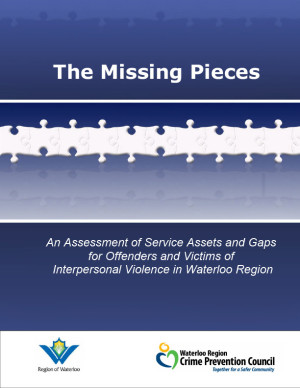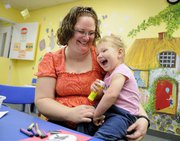Posted on: February 9th, 2011 by Waterloo Region Crime Prevention Council
Measuring trends and services over time and within consistent categories is a strength that makes Correctional Services Canada reports a fascinating read. No, seriously! It’s true!
The 2010 report on corrections, crime and the criminal justice system provides data that can help with understanding some very complex issues. It also provides information needed by all levels of our community to make informed decisions based on sound evidence. We might even say that this data helps us to make “smart on crime” decisions.
The report, as in years past, draws comparisons between Canada and other countries. Canada’s rate of incarceration is higher than that of most Western countries but still falls well below that of the United States, where currently over 756 persons per 100 000 population are in jail. Or, did you know that most victims of violent crimes are younger than 30 years of age?
Why are these numbers important? What do they tell us over time? How do we change our systems as a result of knowing this information? What is the role of ‘smart’ prevention approaches to help reduce these numbers?
Didn’t we warn you it would be fascinating?
Posted on: January 7th, 2011 by Smart on Crime
While the Crime Prevention Council is all about preventing crime, we also have a commitment to reducing victimization which results from crime. The Missing Pieces report gives 44 recommendations for reducing and preventing interpersonal violence in Waterloo Region. “The Missing Pieces” report is part of the Violence Prevention Plan for the Region of Waterloo. This work of the Crime Prevention Council fall within our priority direction for Research and Inquiry.
 The research findings and recommendations were developed after a series of interviews with victims and offenders of interpersonal violence and a number of community agencies who deal with the aftermath of violence.
The research findings and recommendations were developed after a series of interviews with victims and offenders of interpersonal violence and a number of community agencies who deal with the aftermath of violence.
“Many of the “missing pieces” are actually not missing at all – they are scattered throughout our community waiting to be assembled,” said John Shewchuk, Chair of the WRCPC, “This report will help Waterloo Region put in place the needed supports to help curb interpersonal violence and finally complete the puzzle.” Recommendations related to victims were made in the areas of system navigation, support to LGBTQ, sexual assault, male victims, elder abuse, screening for abuse, and domestic violence.
Recommendations related to offenders were made in the areas of offender reintegration, employment, housing, and the Partner Assault Response program. Recommendations related to both victims and offenders were made in the areas of cultural services and access to counselling.
You can download the full report here.
Posted on: December 20th, 2010 by Waterloo Region Crime Prevention Council
 Mark Twain popularized the phrase “there are three types of lies: lies, damn lies and statistics”. Now, over 100 years later, the volume of information and the number of statistics we are exposed to has dramatically increased. If we believe an informed public is an important part of a healthy and engaged community, it is important that citizens understand statistical jargon and how statistics can be used to hide what is really taking place in the world.
Mark Twain popularized the phrase “there are three types of lies: lies, damn lies and statistics”. Now, over 100 years later, the volume of information and the number of statistics we are exposed to has dramatically increased. If we believe an informed public is an important part of a healthy and engaged community, it is important that citizens understand statistical jargon and how statistics can be used to hide what is really taking place in the world.
So here begins our mission: to debunk crime and crime prevention statistics for the rest of us!
“By the Numbers” will take an in depth look at crime statistics and research. It will help us, and a community engaged in crime prevention, to understand and challenge statistics and they way they are used to share and present information, influence and justify policy decisions and explain what’s happening in the world today.
Take for example a newspaper article that discusses a murder rate increase of 25%. This statistic seems alarming. However, if the rate increases to five murders from the previous year of four murders, does the statistic still seem as shocking? This is a classic way to lie with statistics, without actually lying. Presenting percentage changes instead of absolute changes creates a misleading perception. The reverse can also be done. For example, saying that break and enters increased by 75 incidents sounds like a lot. But, if there were 7,500 break and enters in the previous year… an increase of 75 represents only a 1% increase.
I bet you’re intrigued now and can’t wait for more!
“By the Numbers” contributors will include Anthony Piscitelli, Research Supervisor at WRCPC, Jessica Hutchison, Research Analyst at WRCPC and other special guests.
Posted on: December 2nd, 2010 by Smart on Crime
Lunch programs, after-school groups and homework clubs do more than give kids full bellies, friends and better marks.
Years later, they may also keep them from committing crimes and make those children less likely to need costly special education programs.
Those conclusions are among the latest findings of a nearly 20-year-long study that has tracked hundreds of kids from disadvantaged neighbourhoods in Ontario.
The project, Better Beginnings, Better Futures, is a massive undertaking that has involved researchers from universities across the province, including three from Wilfrid Laurier University.
WLU psychology professors Geoff Nelson, Mark Pancer and Colleen Loomis hope the province takes notice of their ongoing project’s latest findings — piling more evidence onto their argument that at-risk children who participate in early prevention programs are more likely to succeed later in life.
“When we first started, we weren’t sure if this kind of approach would work. But the striking thing is we find some pretty significant impacts, not only on the children, but on their families and on whole neighbourhoods,” Pancer said.
 At the time, it was a four-year program that spanned junior kindergarten to Grade 2, and gave children things like in-school help, nutrition and behavioural programs. Their parents and neighbourhoods got to choose what was offered, hired staff, and received programs ranging from job search help, parenting and language training.
At the time, it was a four-year program that spanned junior kindergarten to Grade 2, and gave children things like in-school help, nutrition and behavioural programs. Their parents and neighbourhoods got to choose what was offered, hired staff, and received programs ranging from job search help, parenting and language training.
In the latest findings, children in three participating neighbourhoods — Cornwall, west-end Toronto and Sudbury — were compared with kids from two communities with similar economic conditions and characteristics who did not go through the program.
The result? Years later, the kids who went through the Better Beginnings programs were less likely to commit property crime, more likely to have success in school and socially, and had better-functioning families. They had fewer emotional and behavioural problems, too.
The program also saved governments money on things like special education programs, child welfare and youth court expenses, Pancer said. Later on, he expects those savings will grow, as the participating kids stay out of the welfare system and criminal careers.
At a cost of about $1,000 per child, that’s money well spent, the researchers say, considering it costs over $100,000 a year to incarcerate a person in Canada.
“It just makes economic sense,” Pancer said. “We’re already seeing significant financial savings.”
The findings come as no surprise to people who work closely with young children.
The school system, they say, has long played a large role in determining success later in life, including crime prevention. They say a struggling child who never gets help in those early years has a much greater chance of having a troubled life later on.
“The earlier you can intervene and spot the difficulties students are having, the better off they’ll be down the road. You’ll have people who are better equipped to survive in today’s world,” said John Shewchuk, chair of the Waterloo Region Crime Prevention Council and spokesperson for the local Catholic school board.
“There are many, many thousands sitting in prison right now because those kind of early intervention programs were never there for them when they needed them.”
But it’s not just schools that have a role, Pancer said. Community-based programs like those offered by the Lang’s Farm Village Association can also make the kind of differences the Better Beginnings projects illustrates.
Bill Davidson, Lang’s Farm executive director, said this kind of study is important because it proves claims long made by childhood programs — from recreational to social — that say they set kids up for better lives, he said.
He’d like to see the Better Beginnings program expanded across the province.
“It’s making the kind of difference that it should,” he said. “But I think most countries are slow to adapt to this kind of thinking. Part of the problem is we haven’t had the evidence, prior to now, to demonstrate that.”
Advocates say expanding Better Beginnings into Waterloo Region wouldn’t be that difficult. It could be added to programs already in place here to make a more comprehensive approach to early childhood prevention, said Natalie Brown, co-ordinator of the Alliance for Children and Youth of Waterloo Region.
From the Waterloo Region Record, Thursday December 2, 2010
gmercer@therecord.com



 At the time, it was a four-year program that spanned junior kindergarten to Grade 2, and gave children things like in-school help, nutrition and behavioural programs. Their parents and neighbourhoods got to choose what was offered, hired staff, and received programs ranging from job search help, parenting and language training.
At the time, it was a four-year program that spanned junior kindergarten to Grade 2, and gave children things like in-school help, nutrition and behavioural programs. Their parents and neighbourhoods got to choose what was offered, hired staff, and received programs ranging from job search help, parenting and language training.